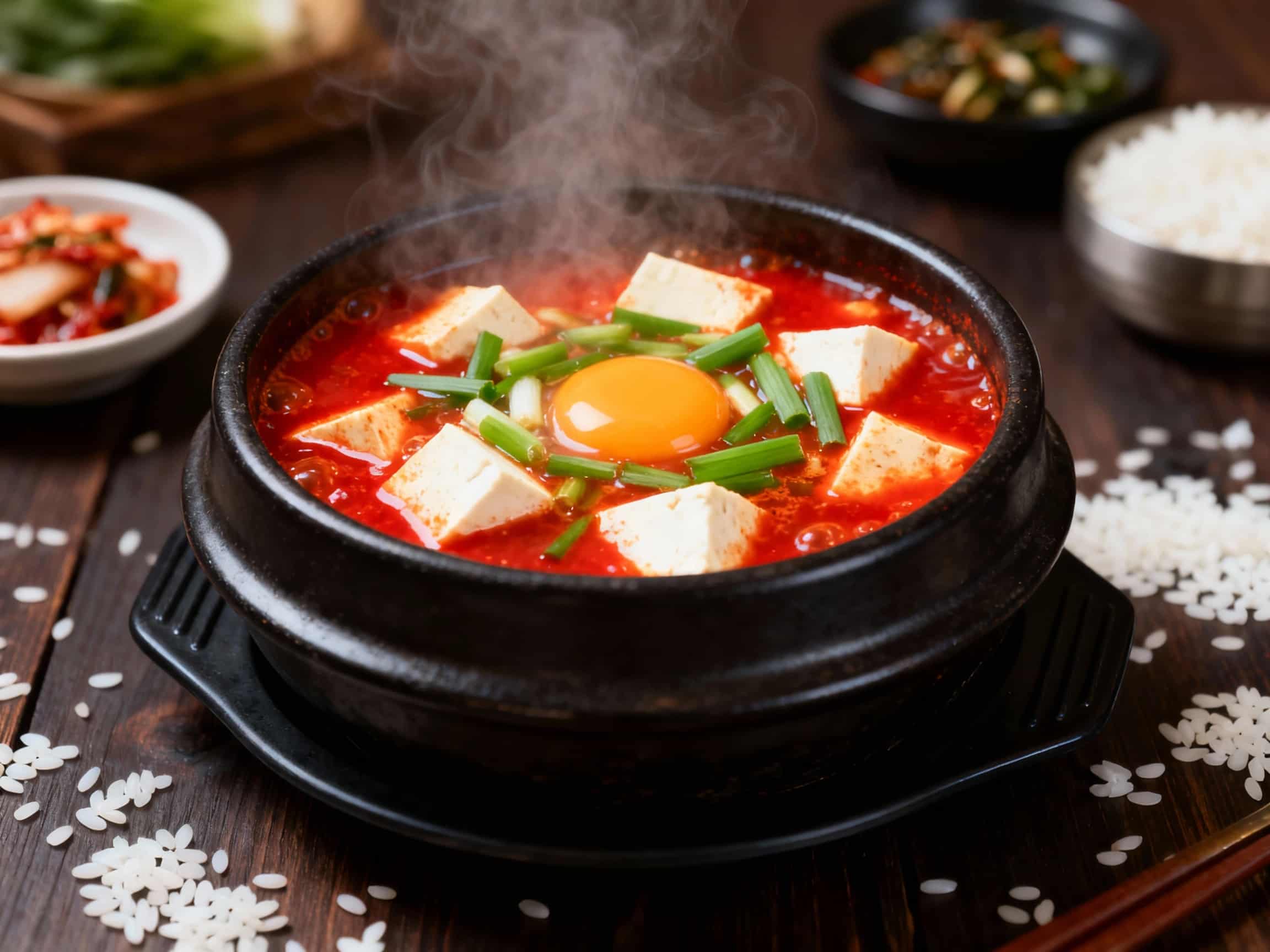
Sundubu Jjigae
순두부찌개
- Country
- Korea
- Region
- Not specified
- Recipes
- 0 Recipes
Dish information
Sundubu Jjigae, a beloved Korean soft tofu stew, is renowned for its incredibly silky texture and robust, spicy flavor profile. The star ingredient, sundubu, refers to uncurdled, unpressed tofu, which contributes to its distinctively delicate and custard-like consistency. While similar tofu stews have existed in Korea for centuries, the modern, spicy version of sundubu jjigae particularly gained prominence in the 20th century. Its popularity soared in the United States, especially in the Koreatown district of Los Angeles, during the 1990s, thanks in part to restaurants like BCD Tofu House, which helped popularize it among a wider audience. The dish epitomizes Korean comfort food, often served bubbling hot in a traditional dolsot (stone pot), which keeps it warm throughout the meal. Traditionally, a raw egg is cracked into the boiling stew right before serving, cooking gently in the residual heat and adding a creamy richness. Sundubu jjigae boasts numerous variations, with common additions including seafood (clams, shrimp, oysters), pork, beef, or just vegetables and mushrooms, catering to diverse palates. Its deep red color, derived from gochugaru (Korean chili powder), hints at its fiery, yet deeply savory and umami-rich character, making it a staple in Korean cuisine year-round, particularly cherished during colder months.
Timeline
Versions of soft tofu stew became more common in Korean households, evolving into dishes resembling modern Sundubu Jjigae.
Sundubu Jjigae gained significant popularity in Korean restaurants in the United States, notably in Los Angeles, spreading its fame globally.
The first BCD Tofu House opened in Los Angeles, becoming instrumental in popularizing Sundubu Jjigae outside Korea.
Related recipes
0 recipesWe'll add related recipes for this dish soon.